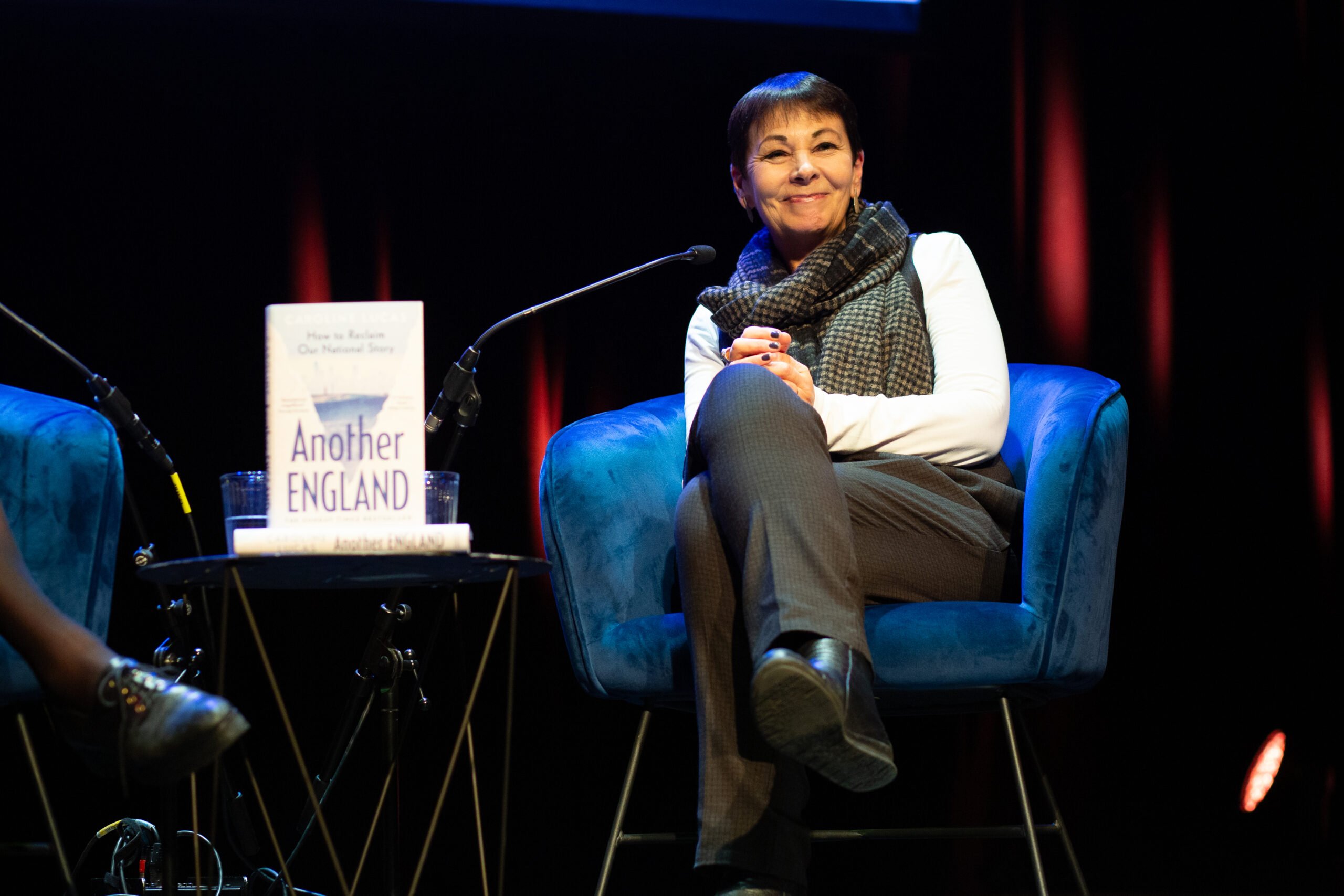
Caroline Lucas delivered her lecture 'Another World is Possible' at the Southbank Centre
Photo: James Allen
Culture and the arts: The missing element of climate action
With all the coverage of last week’s COP29 in Azerbaijan, it might feel like there’s nothing new to be said. But Caroline Lucas, former leader of the Green Party, thinks it’s time for the cultural community to get their voices heard.
Last week’s COP29 summit made headlines for all the wrong reasons – greenwash, hypocrisy, lack of transparency, deferrals and delays. But away from the main halls, something interesting is stirring: a growing recognition of the key role of culture in generating transformative climate action.
Last year, at COP28, a decade of campaigning culminated in the establishment of the Group of Friends of Culture-Based Action. Over 30 ministers or government representatives and a large delegation of committed cultural advocates from across the globe attended the historic inaugural meeting. Work is now underway to agree and table the first ever work plan on culture for COP30 to be held in Brazil next year.
Selfishness, greed and apathy
If you’re wondering why culture is relevant to a climate summit, then the words of the veteran US environmentalist, lawyer and presidential adviser Gus Speth might help. He hit the nail on the head when he famously remarked that he used to think the top environmental problems were biodiversity loss, ecosystem collapse and climate change.
“But I was wrong,” he’s admitted. “The top environmental problems are selfishness, greed and apathy… and to deal with those we need a spiritual and cultural transformation and we, (lawyers) and scientists, don´t know how to do that.”
It’s pretty clear that most politicians don’t have much of a clue either. The people who do know how to do that are the cultural sector. And that’s why increasing efforts to include arts and culture in the COP negotiations are so important.
Because if the climate and nature crisis is a culture crisis, then it follows that the cultural sector needs to be absolutely at the heart of national and global strategies to tackle the nature and climate emergencies. And that requires not just changes to cultural policy and funds, but to climate policy and funds too.
Need to appeal to the head and the heart
Culture defines who we are, what we treasure and how we live. The arts speak to hearts and minds, helping us understand the climate and nature crisis through storytelling and shared experiences. They have the potential to move us to reimagine our world and inspire communities to take climate action.
The limitations of appealing only to the head and not the heart are clear – and go part way to explaining the woeful progress made so far.
For too long, campaigners and – far too often, I have to admit – Green politicians have focused on the ‘information deficit model’ of change. In other words, on the idea that individuals are empty vessels waiting to be filled with virtuous knowledge, and as soon as that knowledge has been imparted, they’ll automatically change how they behave.
While that strategy might have worked to inform the public of the facts of the nature and severity of the climate crisis, it’s all too clearly not been an effective approach to achieve the cultural and societal shifts that need to happen at unprecedented speed and scale.
Storytelling as an effective strategy
Instead, it turns out that storytelling can be a far more effective strategy, as I’ve found out for myself. I’ve spent most of my adult life either campaigning for change, or as an elected politician, trying to implement it. And I’ve learned that change doesn’t happen through political action alone – and that the arts and culture have a vital role to play.
In my recent book, Another England: How to Reclaim our National Story, I explored the political challenges we face through the lens of literature. Stories can help us consider what a future England might look like: not so much its structure and constitution, but what people feel about it, how they engage with it emotionally, and what this might mean for those living within it.
Perhaps the power of story shouldn’t surprise us when we consider that, as a species, storytelling has been an integral part of our lives for more than 100,000 years, whereas logical and argumentative forms of information structures only emerged 5,000 years ago.
It seems that that 95,000-year head start has wired story structure into our brains – a conclusion now also being evidenced by experts in what’s being called the neuroscience of narrative.
Stories outperform factual narratives
Climate Spring – a global agency which works with a range of TV and film creatives to support this rapidly growing climate storytelling movement, is very clear about the evidence base for this approach.
As they write: “Multiple studies have shown that stories consistently outperformed factual narratives for encouraging action-taking in all audiences, even controlling for predisposition. Fictional storytelling that reaches mainstream audiences has the power to change cultural narratives, to influence social norms and change the debate.”
The cultural community is up for the challenge. As a recent report into the national arts policies of 25 countries by the pioneering Julie’s Bicycle concludes, cultural ambition everywhere is high, solutions abound, creativity is abundant. What’s missing is the urgent and overdue policy dialogue with national policymakers to support, scale and mainstream the work that’s already happening.
The full text of Caroline Lucas’ The Cultural Philanthropy Foundation Thought Leadership Lecture – Another World Is Possible – delivered on 20 November at the Southbank Centre, can be found here.
Join the Discussion
You must be logged in to post a comment.